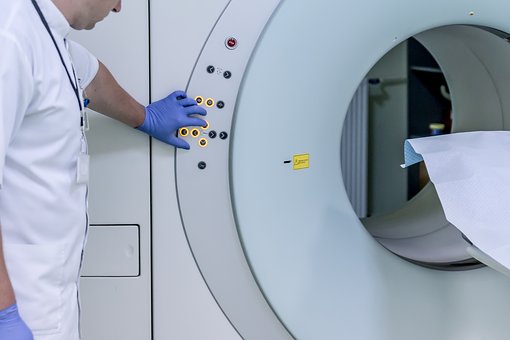Magnetic resonance imaging (MRI) is a type of scan that uses strong magnetic fields and radio waves to produce detailed images of the inside of the body.
An MRI scanner is a large tube that contains powerful magnets. You lie inside the tube during the scan.
An MRI scan can be used to examine almost any part of the body, including the:
- brain and spinal cord
- bones and joints
- breasts
- heart and blood vessels
- internal organs, such as the liver, womb or prostate gland
The results of an MRI scan can be used to help diagnose conditions, plan treatments and assess how effective previous treatment has been.
It is a non-invasive, painless, diagnostic tool and is a painless and safe procedure. You may find it uncomfortable if you have claustrophobia, but most people find this manageable with support from the radiographer
MRI scans don’t involve exposing the body to X-ray radiation. This means people who may be particularly vulnerable to the effects of radiation, such as pregnant women and babies, can use them if necessary.
However, not everyone can have an MRI scan. For example, they’re not always possible for people who have certain types of implants fitted, such as a pacemaker (a battery-operated device that helps to control an irregular heartbeat).
What is Contrast media?
Contrast media is a colourless dye that is injected into a vein in your arm to highlight the blood vessels and tissues in the body. You are then scanned again after the contrast media has been injected. Contrast media is very safe and excreted from your system in your urine. It does not cause drowsiness and you can eat and drink normally afterwards.
* A blood test may be required before the scan is booked, if contrast is likely to be required. This is to ensure that your kidneys are able to filter out the contrast easily, and is applicable to anyone over the age of 65 years, and / or diabetic.
Preparation
It occasionally requires preparation such as fasting (you will be advised if this is necessary at the time of making your appointment). Under certain circumstances an injection of contrast media may be required during the scan (after an initial scan, a fine venflon will be inserted into a vein in your arm or the back of your hand, and removed before you leave the scan room, after the next part of your scan).
For most scans you will be asked to change into hospital provided clothing. You should leave your jewellery at home, since you will be asked to remove this and anything metallic before you are scanned.
During the scan

A radiographer will accompany you into the scanning room to position you on the scanner table. You will be given headphones and/or ear plugs to mask the repetitive knocking noise that the scanner makes during its operation. The radiographer can talk to you whilst you are having your scan and put you at your ease. He/she can see you at all times, but cannot remain in the scan room with you. It is important that you remain still as movement will blur the images produced, and may increase the scanning time. On average, a scan of one area will take approximately 30 minutes, two areas up to 1 hour, and so on.
Results
A consultant radiologist will report on the images produced. The report will be sent to the referring doctor who will discuss the results and any further management with you, at a follow-up appointment.
